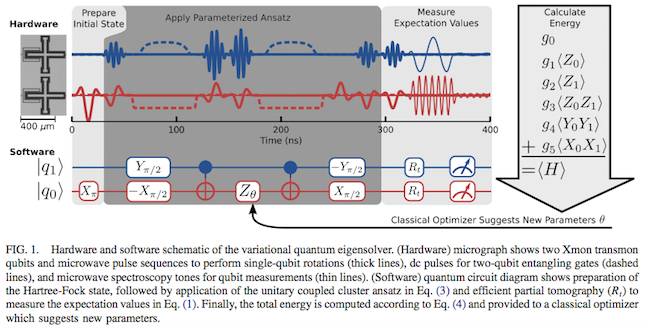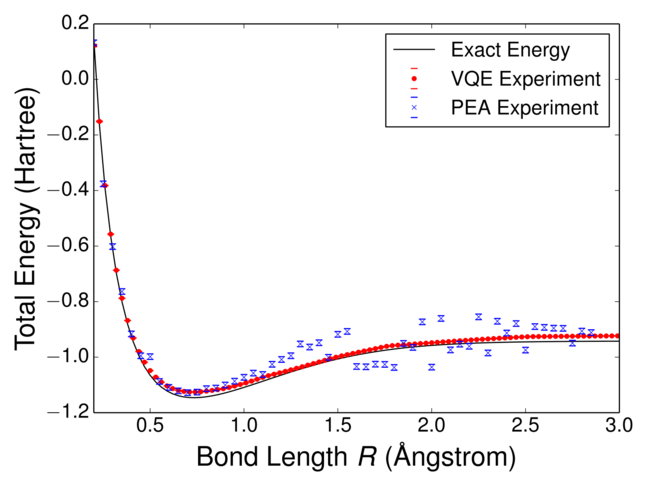This article is more than 1 year old
Google tests its own quantum computer – both qubits of it
Here's something to like about 2016: 'Quantum Software Engineer' is a job title
A couple of years ago, a quantum physicist suggested to Vulture South that one of the best uses for quantum computers might be to model reality. Now, Google reckons its boffins have done just that.
Science wants to model quantum systems because they lie at the heart of reality. For example, chemistry – where Google has chosen to apply itself – is governed by quantum interactions.
However, even expressing simple chemical reactions in quantum terms is something that needs big iron and lots of processor cycles.
Ryan Babbush, who has what for now we'll designate as the World's Most Geekish Business Card (he's a Quantum Software Engineer), explains the work at the Google Research Blog.
The researchers chose the molecular electronic structure problem, roughly: “for a given nucleus, what's the lowest energy configuration of the electrons?”
This is the kind of problem that doesn't scale well in classical computers, he writes: it only takes a second to solve it for methane (CH4); add one carbon atom and two hydrogen, and you have ethane (C2H6), which takes ten minutes; add one more carbon and two more hydrogen and you have propane (C3H8).
For propane, you'd need to book your machine for ten days.
The reason people devote resources to these kinds of problems is that it predicts the rate of chemical reactions, which feeds into pretty much the whole world (Babbush, the Quantum Software Engineer, lists solar cells, catalysts, medicines, flexible electronics, materials science, and the all-encompassing discipline “more”).
Hence the desire to apply a quantum approach to the problem.
Babbush the Quantum Software Engineer (I will probably not get tired of typing that phrase this year) explains that the research involved testing a quantum approach called a “variational quantum eigensolver” (VQE), which he describes as a “quantum analog of a neural network”.
The schematic of the VQE, as published in the researchers' journal paper, is below:

Google's schematic and explanation of its VQE
That seems to look like the quantum part of was just two qubits (top left). The “parametrised Ansatz” the image refers to is, as the paper explains, a “parametrised guess wave function”.
The result of their work is shown in the chart below, which shows the VQE's calculation of the energy landscape of molecular hydrogen, H2 (the PEA it refers to is the calculation from a different quantum algorithm, the phase estimation algorithm).

That's just two qubits. What would happen if you scaled up? Babbush reckons a hundred-qubit system would be enough to “model the process by which bacteria produce fertiliser.”
Since the industrial production of fertiliser needs between one and two per cent of the world's energy and is seriously inefficient, that's far more than a yawn.
A final point to make: the particular problem this system was tested on was also used because other quantum computing approaches have been tested against it - it's "been demonstrated in a photonic system, a nuclear magnetic resonance system, and a nitrogen-vacancy center system", the paper states.
The difference in Google's VQE is that it works without the slow "precompilation" of the problem the other quantum computers need.
As well as Google, Babbush's co-authors on the paper came from UC Santa Barbara's Department of Physics; Harvard's Department of Chemistry; Lawrence Berkeley National Laboratory; Tufts University's Department of Physics; and University College London's Centre for Computational Science and its Department of Chemistry. ®
